HTC One max Review - It's Huge
by Brian Klug on October 28, 2013 10:00 AM EST- Posted in
- Smartphones
- HTC
- Mobile
- One
- Snapdragon 600
- Android 4.3
- One max
The software side of the One max also changes slightly from the original HTC One. The One max launches running Android 4.3, which as of this writing is the newest version of Android available, although 4.4 KitKat is right on the horizon. In addition the version of HTC’s skin and software suite, Sense, is bumped up to 5.5. The biggest changes in Sense 5.5 are to Blinkfeed, HTC’s newsfeed and home screen replacement, and the computationally generated highlights reel videos. First off, blinkfeed gets improvements that now allow custom topics, RSS, and more control over what items appear. In addition there’s now support for both Instagram and Google+ accounts to surface stories in Blinkfeed.
There’s also a read later feature in the highlights feed. Finally there’s also a way to disable Blinkfeed entirely, previously you could change the primary home screen to a widget panel, in Sense 5.5 this menu has been changed around to allow Blinkfeed to be disabled entirely.
A bunch of features that people originally wanted for the automatically generated highlights reel videos are now incorporated into Sense 5.5 as well. The gallery application it lives inside has been reorganized and is more intuitive now, albums and events views are now a pivot rather than drop down option, likewise the individual views beneath the are pivots. Video highlights now lives in its own pivot as well, and now has a simple picker for choosing what videos, Zoes, or photos the algorithm can select from. There are also more themes, which are entirely new, as well as the ability to select your own music. I’m told the highlights reel engine has been completely rewritten with better textures, film treatments, overlays, and dynamic editing. Subjectively I find the results of the new engine to be much better, where the previous highlights videos would always follow basically the same schedule, the new ones seem much more dynamic and won’t get tiresome nearly as fast.
Animated GIFs are all the rage right now, and HTC has chosen to capitalize on some of that with a GIF creator inside Sense 5.5. From the gallery’s edit menu animated GIFs can be created from continual shooting shots or Zoes.
The notification shade also gets a tweak, and the quick settings inside can now be customized. These settings tiles can now either be rearranged or disabled and swapped out for other ones. There is a simple picker for choosing the 12 you want to appear on the shade.
A new addition among these is a do not disturb function mode which can be toggled either here or from the sound menu. This does what you’d expect and silences incoming calls or notifications and prevents them from making sounds, vibrations, or activating the LED. Selected contacts can still cause a ring, and there’s also a timeout duration option.
A smaller but noteworthy change is that HTC no longer preinstalls Dropbox and gives free storage along with it. Instead of Dropbox, HTC has partnered with Google and gives 50 GB of bonus space with the One max.
There are a few other changes in the Sense 5.5 UI but I’ll get to those in the respective sections. The reality is that UI skins aren’t going away, but after spending a lot of time with Sense 5 I honestly never felt like it was distracting. I was able to live comfortably on the HTC One and One mini with Sense 5 just fine, 5.5 is a good refinement that continues to arguably look very good in a world of increasingly flat UI.


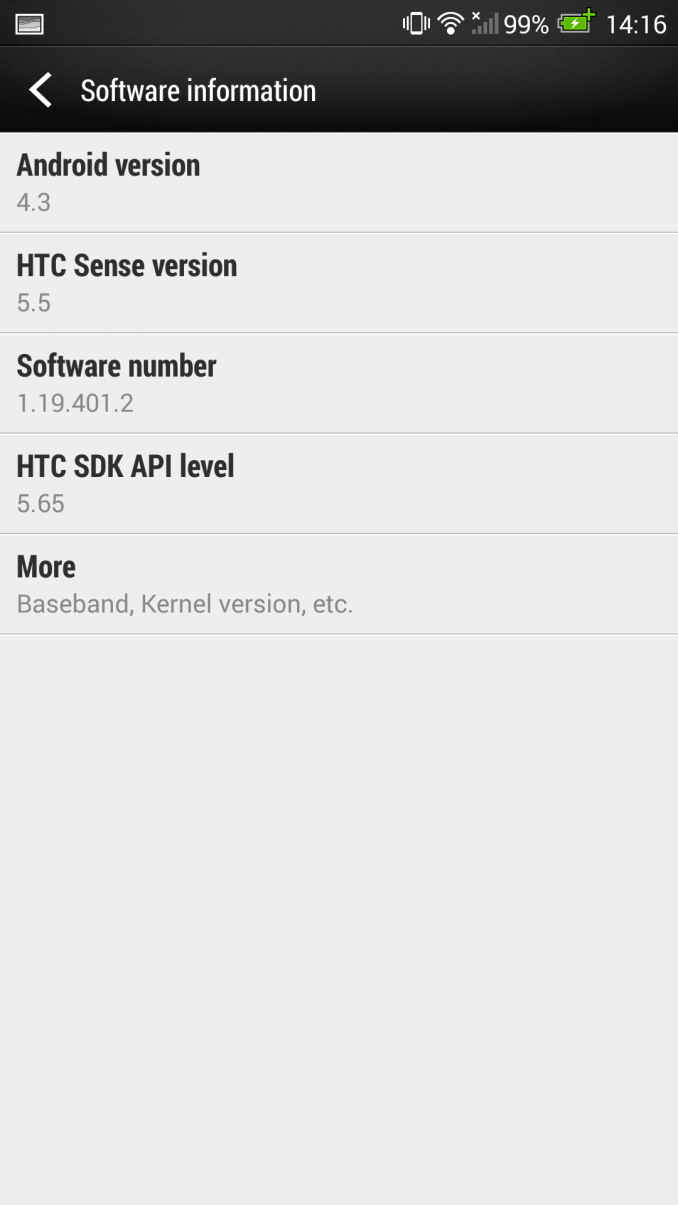

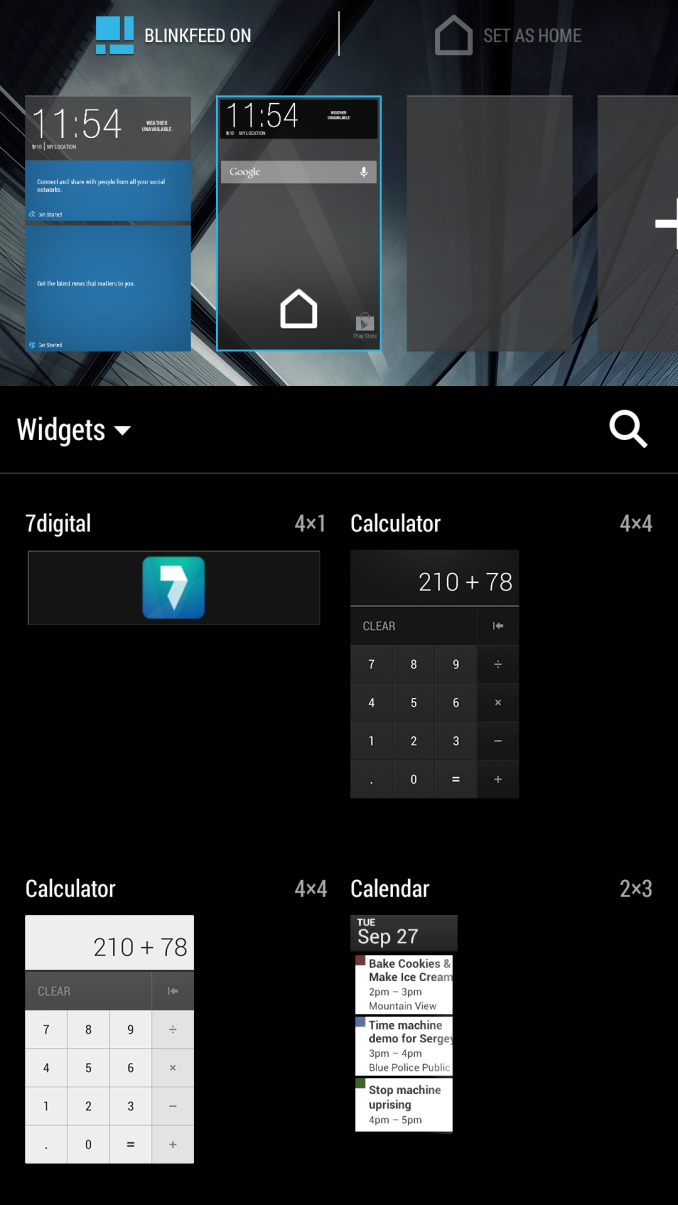



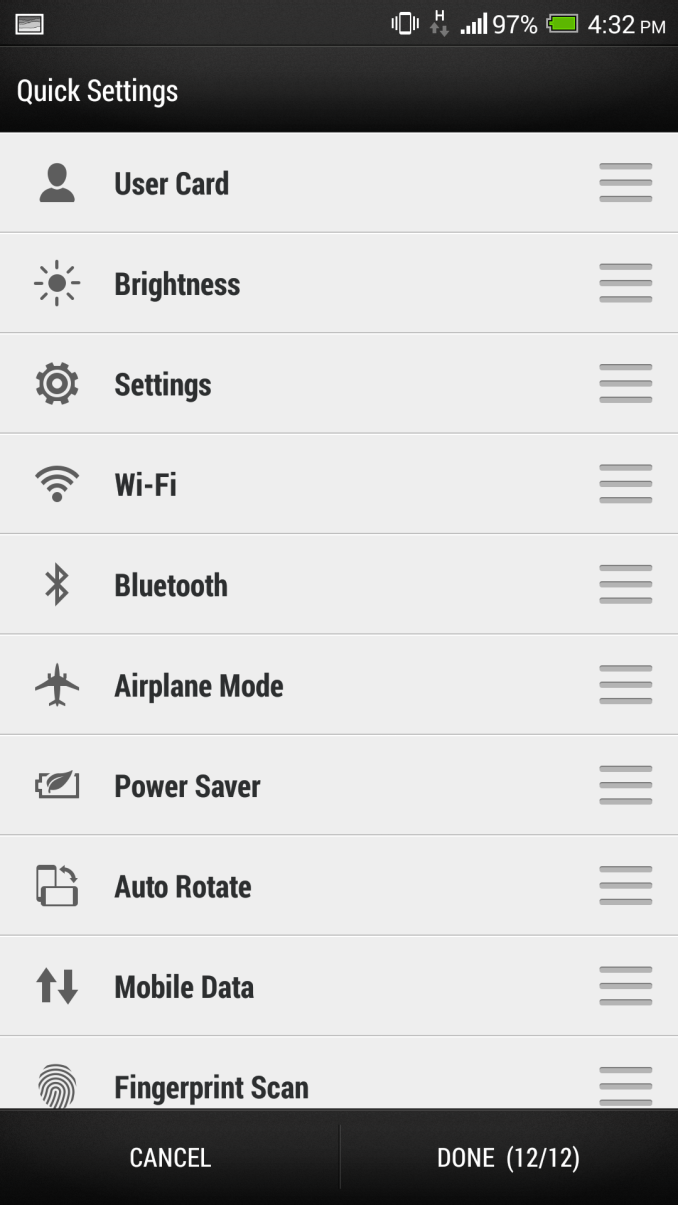

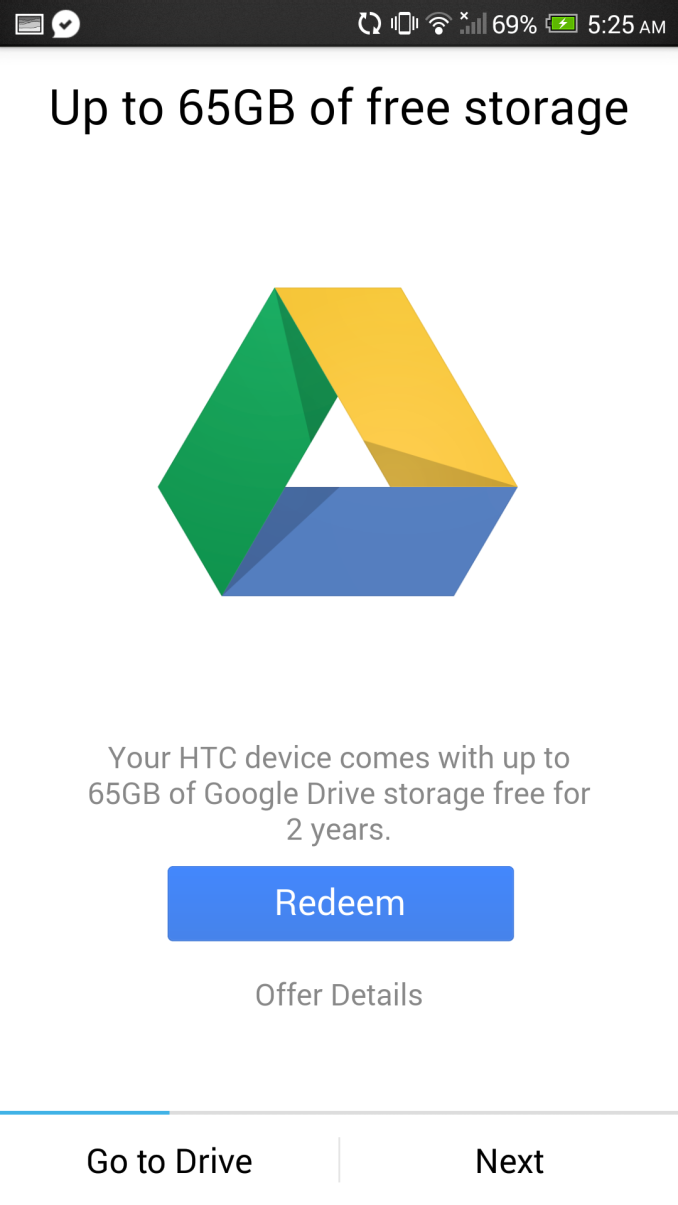
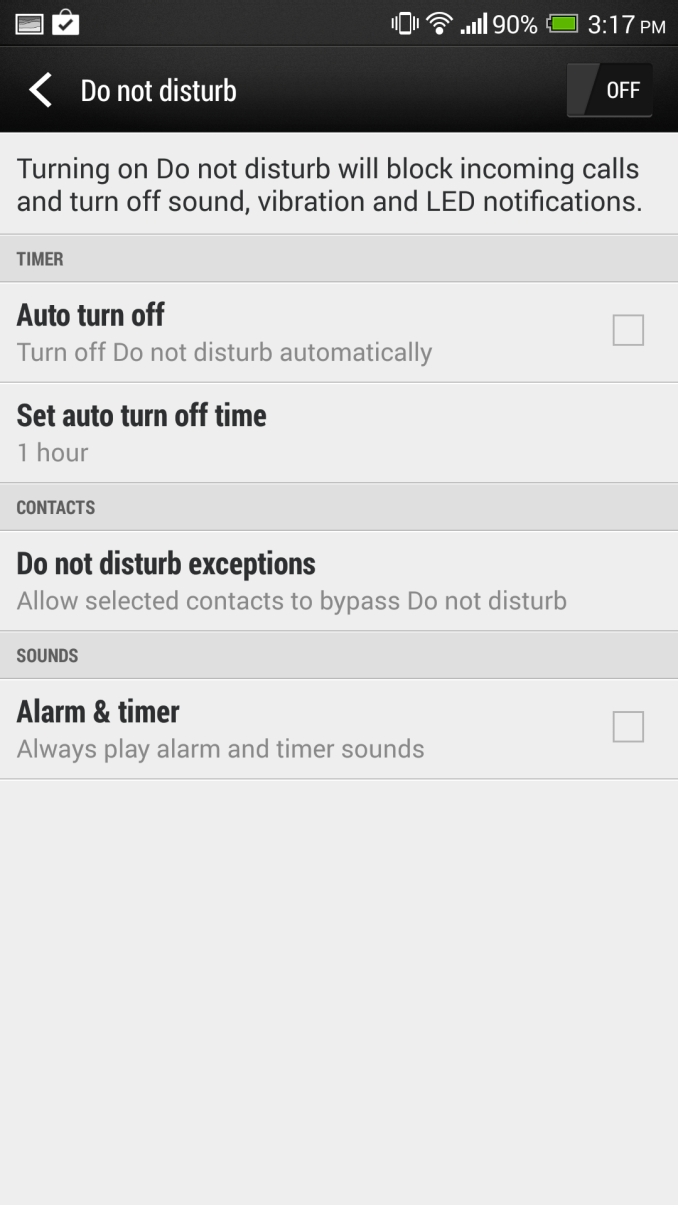








197 Comments
View All Comments
rabidkevin - Tuesday, October 29, 2013 - link
What you are missing is that OEM's want internal only storage to CONTROL THE MARKET! Charging premiums on space for outrageous amounts. It has nothing to do with user demand. Why would anyone turn down 32gb of extra space for 30 bucks?I still have a galaxy s2 that I just FINALLY paid off after 2 years. I'm not ready to make payments for 2 more years when I have a perfectly good working phone in my hand.
Black Obsidian - Tuesday, October 29, 2013 - link
You're rabid alright, Kevin.The vast majority of users don't want expandable storage, because the vast majority of users aren't using all of the storage in their (overwhelmingly base-model-storage) phones as it is. Why is this? Well, because the vast majority of users aren't carrying 1,000+ hours of music around with them at all times. Hell, I'd be shocked if the majority of users even HAVE 16GB of music in the first place!
Us geeks aren't the whole smartphone market. Pre-iPhone, we absolutely were. Now? To say we even account for 5% of the overall market would be overly generous, probably by a factor of 10. We're a tiny, TINY fraction of the market, and even then, only *some* of us care about removable storage.
The OEMs might enjoy milking people by charging them $100 for each $20 increment of flash, but relatively few people are bothering to pony up for 32 or 64GB even where it is an option. If you combined all the people who actually use expandable SD *and* all the people who upgrade from base 16GB devices with no expansion, I doubt you'd reach even 10% of the market. Or 5%, for that matter.
(relatively speaking) Nobody cares.
Klug4Pres - Tuesday, October 29, 2013 - link
Brian, some people want removeable SD cards, and what's more the ability to use them is, objectively-speaking, a useful feature with almost no down-side (if we ignore business decisions to economise by reducing internal storage on phones with this feature, and what Google sees as the inability of users to deal with more than one storage location). If the HTC One has a particular design that would be compromised by allowing SD cards, that may be so, but there are other possible designs, and I doubt you could argue that they would be systematically inferior."Being deprecated by a platform" is not a good reason not to support them. Google obviously has a vested interest in tieing people to the Cloud, so we shouldn't care what Google thinks about this.
You have argued, persuasively, that removeable batteries do involve more of a trade-off, but again some people are more than willing to accept that trade-off because of how they wish to use their device, and because they may wish to make use of the device for longer than the expected service life of the battery.
Oh, and I'm calling flamebait on the "going the way of the dodo" comment.
Jedi2155 - Wednesday, October 30, 2013 - link
I take issue with the comment on internal batteries being bigger when sealed in versus removable. In terms of energy I have yet to see this to be true. All the galaxy phones have continued to have removable batteries yet remain in an incredibly small form factor. My Note II has nearly the same energy capacity (~3100 mAh, Note 3 ~3200 mAh), in a smaller and thinner form factor than the 3300 mAh of the HTC One max. I personally believe most of the reason for an internal battery is simply laziness in design. It simply takes a lot more engineering and design work to include a removable battery versus not. I completely believe its possible to cram a removable version of the same 3300 mAh battery in the phone with the volume they had available in this phone. I bet they could have increase the battery volume even further if they put more effort into it.My primary point is that, while going internal does offer some volumetric benefits, majority of the manufacturers do not exploit it for the simple reason that it costs more.
I'm not even going to touch the microSD comment (even while quite possibly true, many geeks and their gf's still demand it).
Steven JW FCK - Monday, October 28, 2013 - link
So what is wrong having "dumb manually managed storage?"It sounds to me like a feature, and a feature I would happily want to have in its usefulness in being partitioned off from the rest of the phone.
And build quality? Really? The way you talk about build quality sounds more like you are interested in how pretty it looks to you and other people? Your hand is supposed to be around the phone when you use it in the first place, so most of this phones plastic surround will be invisible to you and others, so why are so fussy on wanting a pretty phone, over a feature packed phone? Would better build quality translate into better drop-ability? Not at all! That would be an absurd conclusion to blindly believe.
Dentons - Monday, October 28, 2013 - link
But Brian, you don't focus on build quality, not really. Your critique suggests an overwhelming devotion to the fashion of these devices. You're actually neglecting the underlying technology in many cases to focus instead on things one suspects most Anandtech readers could care less about. Honestly? How much time did you devote to the Gold iPhone in a recent podcast? Yes, it's gold, we get it.Carhartt jeans, Toyota Camry's, and Samsung phones all have good build quality. Louis Vuitton, Rolls Royce, and metal skinned phones are almost entirely about fashion. Not the phone's electronics of course, but the metal casing, yes, fashion. You're ignoring the actual technology in favor of focusing, and focusing, and focusing on the minutia of the exquisite metalized skins of these devices.
Metal may often be studier, but that doesn't devolve everything else to crap. That is often the conclusion to be drawn from your criticism. In point of fact, there are plastics with far better strength to weight ratios than any metal. As a technology person, I really don't care if the case is metal or plastic, so long as it's functional. Your endless rants about the greasy Samsung casings truly baffles me. One wonders if you have some sort of unusual oil factories in the palms of your hands?=.
Or just maybe, you go through so many phones that are all so similar, the small differences start to become big differences. In that light, I recommend the following XKCD comic strip: http://xkcd.com/915/ - "Connoisseur"
Brian Klug - Monday, October 28, 2013 - link
Yes I do focus on build quality in the review, and the context is still the tradeoff not being worth it in the case of the One max."neglecting the underlying technology"
What are you even talking about?
-Brian
Dentons - Monday, October 28, 2013 - link
I'm talking about the fact that you rarely, or barely give any kudos to devices with microSD and user swappable batteries. Those features aren't listed as benefits, they're hardly mentioned at all. Anandtech tests everything else, but I cannot recall the last time Anandtech tested the speed of a microSD port.Your recent review of the Note 3 was a case in point. You barely mentioned either of those features. They are real, actual hardware differentiators. For many of us, not only are they important differentiators, the absence of them is a deal breaker.
A cost conscious consumer can honestly want a device to be future proofed for a few years. We don't get new, free, phones a few times each month. Our batteries wear out. Media sizes are ever increasing. Not all of us want to rely, nor can we rely on the cloud for all our media needs. It is a waste for us to spend an extra $200 for a phone with 64GB when we're far better served with $30 in cheap SD storage. As you point out, we cannot use it for apps, it's for video and music. For those use cases, the highest quality NAND is generally wasted.
Even though you don't use those features, the best selling smart phone models in the world still have them. You spend orders of magnitude more time discussing the casings, finishes, and lustrousness of phones than either of those. So yes, in this case, you definitely are neglecting the underlying technology in favor of fashion.
On this topic, in both in your reviews and on the podcast, your attitude is one of "I know what you need better than you know what you need". That's what you're telling us. That you're the expert, and that you know best.
How would you respond to a reviewer repeatedly telling you that you really didn't need the features you used every single day? That's what you're doing. It's annoying, and insulting.
apertotes - Tuesday, October 29, 2013 - link
Well, if they did not neglect those features they would have to criticize Apple for not providing them, and that is a deadly sin.Since Apple is perfection, that is the mirror they use to analyze the rest. Things that do not exist in Apple are worthless by definition.
Dentons - Tuesday, October 29, 2013 - link
You make a relevant point, and allude to another equally important point.As you point out, by not giving kudos to phone makers who include microSD and removable batteries, they don't have to list the absence of those features as cons to the Apple and Nexus products the staff here tend to glow over.
Which leads into another key point. We all know what would happen were Brian's to neglect to mention a key, unique, hardware differentiator in the review of an Apple product. Apple or their marketing agency would contact him. They'd bitch, they'd moan, they'd complain, they may even threaten future review status.
Many reviewers know not to neglect a focus on Apple's little differentiators, but they have little compunction in reviewing 'lesser' devices with a completely different set of rules.